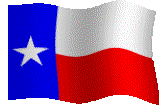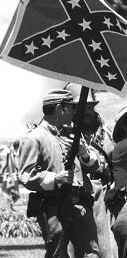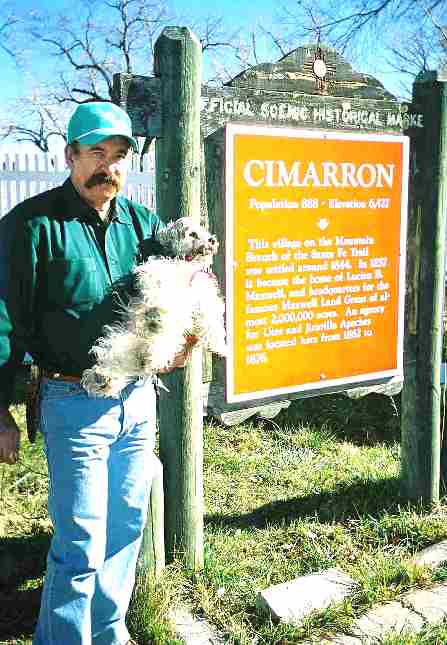|

History of the Chuckwagon
   



History of the Chuckwagon
The first Chuck Wagon was developed by cowboys working for Colonel Charles Goodnight, co-founder of the Goodnight-Loving cattle trail. Credit for inventing the chuck wagon is given to
legendary ranchman and trail driver Charles (Chuck) Goodnight who invented the chuckwagon in 1866 for use by his crews.

Charles Goodnight, Inventer of the Chuckwagon.
Texas Cattle Drives Began in 1867 and ended Some 20 Years Later
Joseph G. McCoy, a young cattle shipper from Springfield, Illinois came up with the idea of a shipping point along the railroad that was steadily moving west. He chose the village of Abilene, Kansas for his enterprise. In the space of a few months he talked the Kansas Pacific Railroad into furnishing stock cars. He built shipping pens and a hotel in Abilene, and then he sent word to Texas that he had the facilities to ship all the cattle they could bring to him.
The great trail drives up the Chisholm trail began in 1867. In time expansion of the railroad system made the long cattle drives unnecessary, but before that day came over 9,000,000 head of cattle were driven from Texas to destinations in the north, with an approximate value of $100 million dollars. Not all the cattle were sold for beef. Thousands of longhorns were used to stock new ranches throughout the Great Plains states and territories. They spread from the Dakotas to Utah, and from Texas to Canada.
Cowboy Shortage Led to Development of the Chuckwagon
By the 1870's, dozens of cattle drives were moving millions of cattle from Texas to markets in the midwest.
As a result, there was a shortage of cowboys and there was tremendous competition in recruiting good cowboys. To gain the recruiting advantage, Goodnight decided to improve on the quality of meals served along the trail.
What he needed was a good cook and a mobile kitchen.
To that end, Colonel Charles Goodnight purchased a sturdy war-surplus munitions wagon strong enough to make the journey of more than a thousand miles along difficult trails under all kinds of weather.
Goodnight outfitted the wagon with a kitchen on the back of the military wagon
and with the help of his cook, developed an efficient layout that was soon adopted by all trail drovers across the west and named the chuckwagon after founder Chuck Goodnight.
The chuckwagon was used to transport food and supplies for trail crews and cattle drives and served as the cowboy cook's home on long trail drives. The chuckwagon also carried provisions for the trail hands, especially water, plus bedrolls, shovels, axes, rope, and even a few personal items.

Typical Crew for a Trail Drive
A 12-man crew could manage a herd of 2,000 to 3,000 head. The trail boss was the ultimate authority on the trail, like the captain of a ship, and was paid $100 to $125 a month. Of the rest of the crew, the cook was the most important, earning about $60 per month.
Operation of the Chuckwagon
During the long trail drives, the chuck wagon was the headquarters of every cattle outfit on the range. The cowboys ate their meals there and it was their social center and recreational spot, a natural gathering place for exchanging "windies," or tall tales, listening to music if their happened to be a musician in the group, or just recounting the experiences of the day.
The chuck wagon was also the cowboy�s only known address, truly their home on the range. The chuck wagon cook was the king. He ruled the wagon with an absolute hand. Because the morale of the men and the smooth functioning of the camp depended largely upon him, the cook�s authority was unquestioned. Even the wagon boss walked softly in the vicinity of the chuck wagon cook.
Wagon cooks as a group had the reputation of being ill-tempered, and no wonder. Their working conditions usually left a lot to be desired. The nature of the cook�s job required that he get up several hours earlier than the cowhands, so he worked longer hours with less sleep. When the outfit was on the move, he had to be at the next appointed camp and have a hot meal ready on time. He was often short of fuel or water. He was constantly called upon to battle the elements � wind, rain, sand, mud, insects, and even rattlesnakes � while preparing his meals. In addition to preparing meals, Cookie also was expected to act as barber, doctor, banker, and sometimes as mediator or referee if a disturbance among the cowboys arose. He was keeper of the home fires, such as they were, out on the range.
The atmosphere around a chuck wagon has been described as pleasantly barbaric, as might be expected with a group of men far from home who were doing rough, dirty work under sometimes brutal conditions. The language was colorful and often profane.
There were, however, definite rules of behavior around the chuck. Most were unwritten laws understood by all but the greenest of cowhands. For example, riders approaching the campsite always stayed downwind from the chuck wagon so that they didn't cause dust to blow into the food. No horse could be tied to the chuck wagon wheel or hobbled too close to camp. Cowboys looking for warmth never crowded around the cook�s fire. There was no scuffling about of kicking up billows of dust around the chuck wagon while meals were being prepared.
When it came to eating, no cowboy dared help himself to food or touch a cooking instrument without Cookie�s permission. The cowboys never used the cooks worktable as a dining table; they sat on the ground and used their laps instead. When dishing out a helping of food from a pot, they placed the lid where it wouldn�t touch the dirt. It was against the rules for a cowboy to take the last piece of anything unless he was sure the rest of the group was through eating. If a man got up during a meal to refill his cup with coffee and someone yelled, " Man at the pot," he was supposed to fill all the cups held out to him as well as his own.
After a meal, the cowboys always scraped their plates clean and put them in the "wreck pan" or the receptacle that the cook provided for this purpose. Like most rules of etiquette, the rules around the chuck wagon were based on concern for others and common sense.
Along with sourdough biscuits and coffee, most chuck wagon meals included beans, or frijoles, as they were often called. Beef was something that was never in short supply, and a good chuck wagon cook knew how to prepare it in many different ways. Fried steak was the most common; the cowboys never seemed to get tired of it; but pot roasts, short ribs, and stew showed up often on the menu.
If Cookie had time, and he was feeling kindly toward "the boys," as he called the cowhands, he would make a desert. Usually it was a two-crust pie made with apples or some other dried fruit.
On a chuckwagon, the larger back partition held sourdough starter, a flour sack and larger utensils. Smaller spaces contained tin plates, 'eatin' irons," [utensils] and a 3 - 5 gallon coffee pot. If the weather was cold, the cook often kept the sourdough starter against his body, as it required constant warmth. Heavy pots and pans were stored in a hinged box below the chuck box. A water barrel was mounted on the wagon side. It was cooled by wrapping in wet canvas or gunny sack. A jockey box beneath the footboard held emergency equipment such as hobbles or horseshoeing tools. The wagon bed held other staples such as beans, coffee, flour, salt, potatoes, etc. In a large outfit, there was a separate wagon for bedrolls.
A Dutch oven, a cast iron pot with legs and a rimmed lid was essential. It was placed over hot coals. More coals were then piled on the lid. Equally important was the large coffee pot and a couple of kettles. At the campfire, fire hooks dangled from the crossbar over the heat for the pots to hang on. The 'gouch' hook lifted hot and heavy lids. There was a dish pan for mixing bread, a kettle for heating water for washing, a 'wreck' or 'roundup' pan for dirty dishes, and a 'squirrel can' for scraps.
Sourdough was a staple and cooks guarded their dough keg.
A typical day's food on the trail was meat, hot bread, dried fruit and coffee for breakfast. The noon and dinner meal included roast beef, boiled potatoes, beans, brown gravy, light bread or biscuits, and coffee.
Dessert included stewed dried fruit, spiced cake made without eggs or butter, and dried fruit pies.Northern cowboys were more likely to get beef with their meals. Some outfits in the Southwest made do with salt pork, beans and sourdough.
Typical Chuckwagon Provisions for a 1000 mile trail drive included:
300 pounds salt pork
500 pounds Flour
50 pounds Salt
100 pounds Coffee
50 pounds Baking Powder
10 pounds Pepper
200 pounds Onions
500 pounds Beans
50 pounds sour dough starter
500 pounds potatoes
50 pounds dried chilis
50 pounds dried garlic
50 pounds lard
200 pounds dried fruit
Approximate cost: $3500.00
The chuckwagon, sometimes drawn by oxen, but usually by mules, carried not only food, utensils and a water barrel, but also tools and the crew's bed rolls. A fold-out counter, supported by one or two hinged legs, was used for food preparation. The wagon contained several drawers and shelves, with a �boot� or storage compartment underneath, all covered by a canvas top. The cook served beef and bison steaks, and stew , "chuckwagon chicken" (bacon), "Pecos strawberries" (beans), "sourdough bullets" (biscuits) and cowboy coffee.
After the beef was salted, the cook slipped them into a hot Dutch oven. He then pinched biscuits off one end of the newly made loaf of dough, rounded each one between his palms, dipped it in melted tallow and placed it into a bread oven. When the bottom was filled, he set the lid in place and shoveled hot coals around and over it.
When the grub was ready to serve the cousie would give a shout to summon the cowhands to breakfast.
The men headed for the wash basin and scrubbed their hands and faces and passed around the all too wet towel to dry off. A common comb may have been used to arrange messy hair. (Sounds a little too cozy).
Each man helped himself to a plate, cup and tools. The men got in line, grabbed their grub, plunked down somewhere and ate their meal.
As each man finished, he flipped the dregs from his coffee onto the ground and dropped his dirty dishes into the "wrecking pan" - a big dishpan set aside fir this purpose. To neglect placing dishes in this pan was the ultimate no-no
As soon as the men saddled up and left the cook washed and dried the dishes. The bed rolls were tossed into the chuck wagon or a bed wagon, (hoodlum wagon). The Dutch ovens were wrapped in burlap bags and stowed away with the pot racks in the boot. An assortment of hooks and hangers on the side of the wagon accommodated and other things that needed to be stowed away. The team was hitched to the wagon and the move to the next camp would be under way. Along the way the cook (cousie) would collect any combustible material he could find and store it in the "possum belly" under the wagon.
When the new bed ground was reached the cook would dig his fire trench, set up his pot rack, get the coffee going and get started on dinner. A good cousie changed the monotonous diet by preparing soup and stews which were eaten in relish despite some rather vulgar names for the concoctions. A really imaginative cook occasionally stirred up pastries with dried fruit or put up some beans to soak, though beans on the high plains were not to common as it took too long for them to cook.
Evening was the time of day to kill a beef. The carcass was halved with the cooks axe and each half was hung from an erected wagon tongue, where the meat chilled during the night, and was ready to be eaten in the morning. During the heat of the day the meat was wrapped in tarpaulins. At night the beef was hung out again to chill.
After washing the dishes, filling the water barrel and dragging wood the cook could finally relax and enjoy what was left of the evening.

Also See Early Day Texas Cattle Drives
|

 our email address is:
lenkubiak.geo@yahoo.com our email address is:
lenkubiak.geo@yahoo.com
For questions or comments, send me an Email
|

LEONARD KUBIAK's
TEXAS HISTORY WEBPAGES

NATIONAL HISTORY
|

MORE PLACES TO GO
|
|

